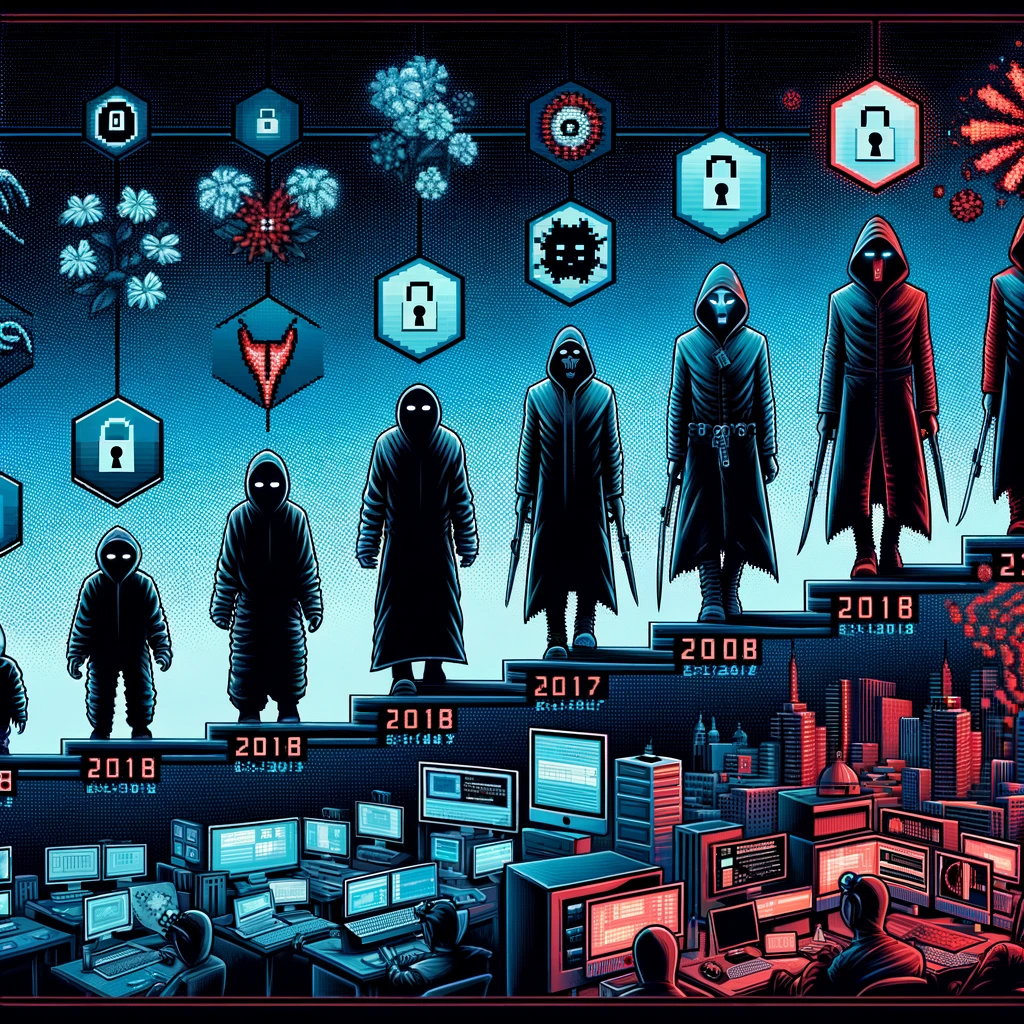In recent years, the cybersecurity landscape has witnessed a rapid and alarming surge in ransomware attacks. Ransomware, a type of malware that encrypts an organization’s data and demands a ransom to restore access, poses a significant threat to businesses of all sizes and industries. With the constant evolution of ransomware tactics, techniques, and capabilities, understanding the threat landscape and implementing robust security measures has become more crucial than ever.
Typically, ransomware attacks are financially motivated, aiming to extort money from victims in exchange for the decryption keys required to regain access to their data. However, the impact of ransomware attacks extends far beyond the immediate financial burden, with potential consequences such as operational disruptions, reputational damage, lost productivity, and even legal liabilities. Moreover, paying the ransom does not guarantee the recovery of the encrypted data or the reassurance that the attacker will not strike again.
In light of these threats, businesses must remain vigilant about the evolving ransomware landscape and prioritize their cybersecurity strategies to thwart ransomware attacks. In this blog post, we will delve into the evolution of ransomware, explore its impact on businesses, and discuss the best practices for protecting your organization from these ever-evolving cyber threats.
The Evolution of Ransomware
Ransomware has undergone significant evolution since its inception, with attackers continually developing new and more sophisticated techniques. The evolution of ransomware can be loosely categorized into the following stages:
1. Early ransomware: Early strains of ransomware emerged in the late 1980s and early 1990s, primarily targeting individual users. These early versions were relatively simple, using basic encryption methods and demanding relatively small ransoms. The emergence of cryptocurrencies, such as Bitcoin, later facilitated an unprecedented growth of ransomware attacks due to the anonymity provided by these digital currencies.
2. CryptoLocker and the rise of encryption-based ransomware: In 2013, the infamous CryptoLocker ransomware marked the beginning of a new era of ransomware attacks. CryptoLocker utilized robust encryption techniques to render victims’ data inaccessible, dramatically increasing the stakes for affected organizations and individuals.
3. Ransomware-as-a-Service (RaaS) and the democratization of attacks: RaaS platforms allow cybercriminals to purchase or rent ransomware tools and infrastructure, lowering the barrier to entry for potential attackers. This development has led to a rapid proliferation of ransomware attacks and an ever-expanding range of targets.
4. Targeted and high-profile attacks: Increasingly, ransomware actors are focusing on high-profile targets, such as large businesses, government agencies, and critical infrastructure operators. These attacks often involve extensive reconnaissance and highly tailored tactics to maximize the potential for a successful ransom payout.
The Impact of Ransomware on Businesses
The repercussions of ransomware attacks can be significant and far-reaching for impacted businesses, including:
1. Financial losses: Ransom demands can range from thousands to millions of dollars, often accompanied by extensive downtime and lost productivity costs.
2. Operational disruptions: Ransomware attacks can incapacitate critical systems and infrastructure, leading to disruptions in day-to-day operations and a loss of customer trust.
3. Reputational damage: Ransomware incidents can result in negative publicity and a tarnished reputation, which may take time and resources to rebuild.
4. Legal and regulatory consequences: In some cases, organizations may face legal liabilities or regulatory penalties for failing to protect sensitive data or adequately address ransomware threats.
Best Practices for Protecting Your Organization Against Ransomware
To shield your organization from the devastating consequences of ransomware attacks, implement the following best practices:
1. Maintain regular data backups: Establish a comprehensive backup strategy that includes frequent, incremental backups of all critical data. Store these backups in a secure, offsite location, and regularly test them for integrity and recoverability. Should a ransomware attack occur, having a reliable backup can significantly mitigate the impact and reduce your organization’s reliance on paying the ransom.
2. Update and patch software promptly: Regularly update and patch your organization’s systems, applications, and firmware to protect against known vulnerabilities exploited by ransomware actors. Implement a systematic patch management process to ensure timely and efficient deployment of updates.
3. Employ advanced security technologies: Utilize modern security technologies, such as next-generation antivirus software, endpoint detection and response (EDR), and intrusion prevention systems (IPS), to detect and thwart potential ransomware attacks.
4. Educate employees regarding cybersecurity risks: Train employees on the risks associated with ransomware, emphasizing the importance of vigilance and best practices, such as detecting and avoiding phishing emails, adhering to password policies, and promptly reporting any suspicious activity.
5. Implement network segmentation: Segregate critical systems and sensitive data within your organization’s network, reducing the potential attack surface and limiting the spread of ransomware in the event of a breach.
Final Thoughts
The rapidly evolving ransomware landscape poses a significant and persistent threat to businesses. Understanding the nature of these threats and implementing robust security measures are essential to safeguarding your organization from potential ransomware attacks.
By following these best practices and prioritizing cybersecurity, your organization can effectively combat ransomware and maintain a strong security posture in the face of emerging cyber threats.
Partner with us at The Saturn Partners to bolster your organization’s defenses against ransomware and other cyber threats. Our expert cybersecurity services can help you develop and implement comprehensive security strategies tailored to your needs, minimizing risks and protecting your valuable digital assets. Reach out today to take the first step toward a more secure future for your organization.

